“Gardens”, a site-specific installation, addresses the theme of identity and explores new models of transforming the exhibition space
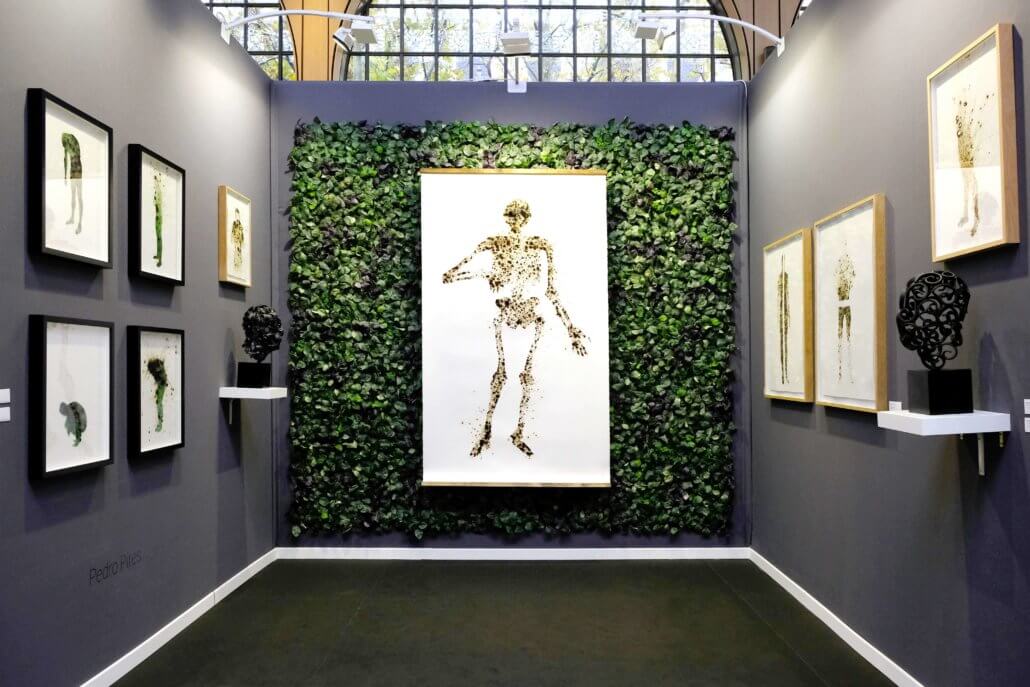 Installation view of “Gardens” at AKAA 2019. All images courtesy of the artist & TINAWC.
Installation view of “Gardens” at AKAA 2019. All images courtesy of the artist & TINAWC.
ART AFRICA spoke to Pedro Pires, who is represented by This Is Not a White Cube, ahead of his solo exhibition at Also Known As Africa (AKAA) 2019 in Paris. The installation set in a 3m3 cube was made up of two series of previously unreleased works.
ART AFRICA: “Gardens”, your site-specific project at AKAA 2019, sees you return to the theme of identity, which has been central to your work in recent years. How does this theme continue to inspire you?
Pedro Pires: As an Angolan and Portuguese national, this theme is present all the time – it doesn´t stop being the catalyst of a lot of my work. I explore my social position as a white Angolan and Portuguese in each of these countries – always having the past in mind – and question how I fit in or integrate within the social, political and economic arenas of society, especially in Angola where I experience a feeling of dislocated national identity. I use this as the engine to do research about displacement; about our relationship with our body and the other; about how identity is constructed and constantly mutates; about what makes us belong to a country and about what it is to be different or equal. I focus on my personal experience and life to talk about these and other subjects that are enclosed in the theme of identity – I believe this is essential to approach the future.
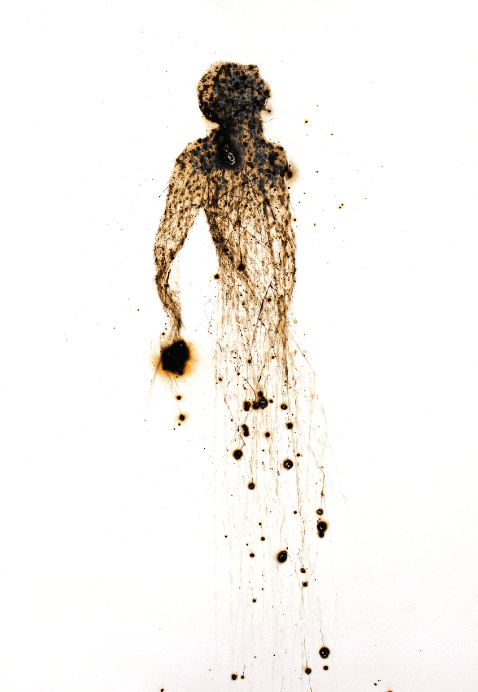 Pedro Pires, Universal #5, 2019. Intervention on paper, 60,5 × 41,3 × 0,1cm.
Pedro Pires, Universal #5, 2019. Intervention on paper, 60,5 × 41,3 × 0,1cm.
What is the relationship between the works that make up “Gardens” — Universal and Specific appear to be parallels — and what is the name of the project derived from?
For this project, I wanted to play, as I have been doing recently, with contrasting, or opposing, ideas as a strategy to create narratives and play with perception. The Universal and Specific series of drawings are opposites in the way that the body is shown. Specific shows a body that is looking inwards, limited by the skin and closed in its own space. Universal is about our relationship with space. It shows bodies that are expanding or divided.
The titles for these came up when I was reading Grada Kilombas’s book Plantation Memories: Episodes of Everyday Racism, where Kilomba writes a series of opposite concepts such as objective/subjective; neutral/personal; rational/emotional to demonstrate how, in academic contexts, “concepts of knowledge and science are intrinsically connected to power and racial authority.”
The artificial plant wall is the starting point of everything. ‘The Real’ versus ‘False’ of this main wall has a parallel with the ‘Fragility’ versus ‘Violence’ present in the drawings and with the decorative versus protection quality of floral metal elements used on the heads.
I wanted to have a word that linked the three walls, and that would frame the whole project — having the central wall with the plants it made sense to start with a word connected to nature. “Gardens” makes us think of nature but also of a space created by man, organised, thought out and planned. It seemed like a good way to lead the viewer into the project.
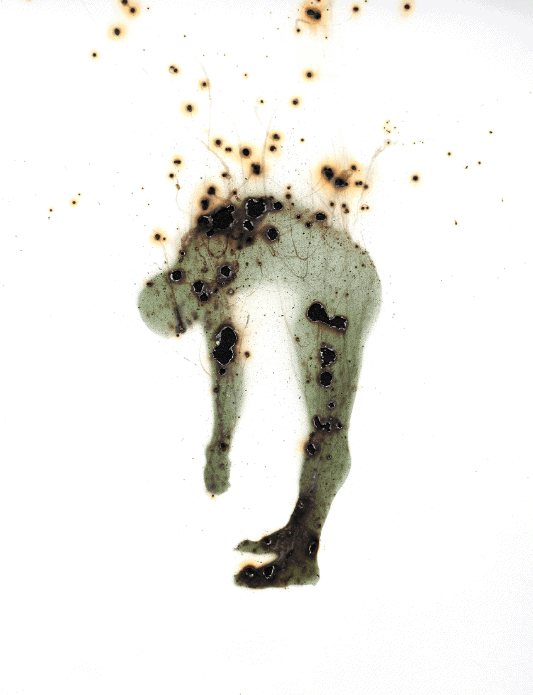 Pedro Pires, Specific #5, 2019. Intervention on paper, 50 × 38,7 × 0,1cm.
Pedro Pires, Specific #5, 2019. Intervention on paper, 50 × 38,7 × 0,1cm.
This project takes a performative approach — exploring the relationship between performance and installation, as models of transformation of the exhibition space — that emphasises the role the public plays in your artistic process. Can you elaborate on what that role is?
I observe and talk with the public as much as possible during my shows or on other occasions. I am deeply interested in understanding the links between the reactions of many different people to my work and to things in general with the goal of using this information for my research and future projects. I am focused on the general public and in having a presence in the social and political arenas with the work that I do so understanding – or at least trying to – all types of the public is essential. Sometimes this public can be the cleaner of the building that shows up at the end of the show; it can be a collector, a teacher, an artist, either way, the work is there for all of them.
The project created for AKAA opens space for this research as it mutates every day, allowing new narratives and reactions to be created. Having many works changing daily will allow me to research how the public understands the whole project and how they see the relationships between the artificial plant wall and the large paper works.
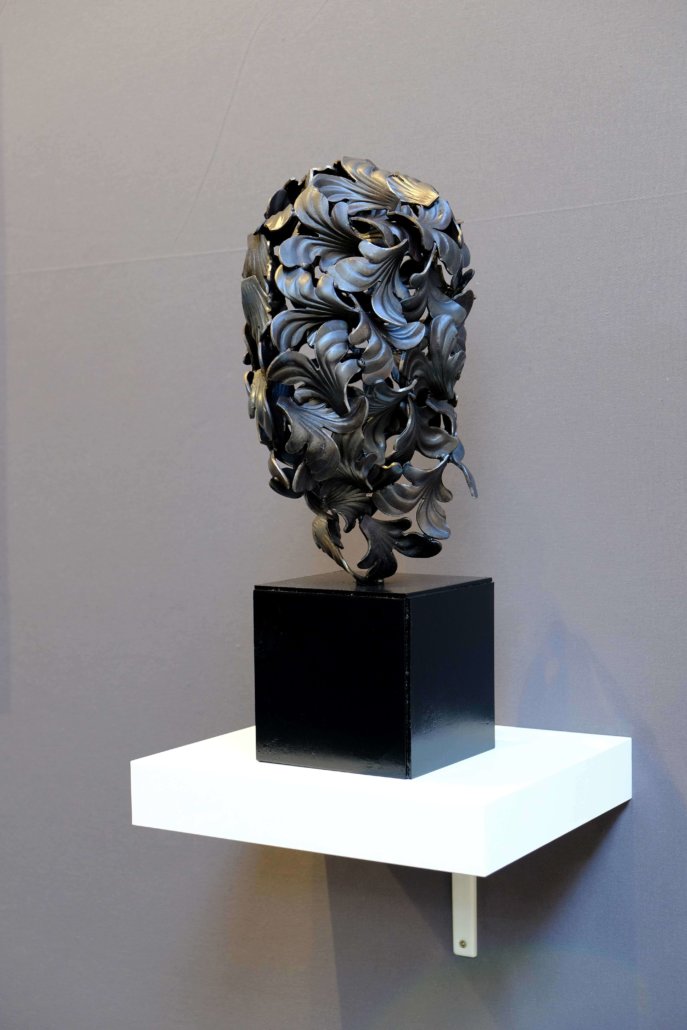 Installation view of Skin (petal), 2019. Iron sculpture, 50 × 29 × 27cm.
Installation view of Skin (petal), 2019. Iron sculpture, 50 × 29 × 27cm.
“Gardens” consists of two series of works on paper, two iron sculptures and a monumental installation. Can you explain how the “utilitarian and mass-produced” material you use lends itself to your work?
Yes, there are two objects in “Gardens” that are central for the project. One is the artificial plants from IKEA, and the other is the decorative metal elements used on the heads. I could have purchased the plants from a different shop, but after finding the plants in IKEA it seems perfect for the project. I love working with objects that are vulgar and might be present in people’s houses. The idea was to play with the idea of natural versus artificial, so I chose these plants to create a wall that would work, at first sight, as a hook to attract the mind of the viewer who would immediately realise that the plants are fake. My idea is that this wall is the starting point of the project provoking a reaction to the public and playing with their perception and knowledge.
The other important elements, as I mentioned, are the snail and leaf-shaped metal elements used in railings, gates, etc., which are used to decorate them. I have been very interested in division and how division is made in society. These elements used in the heads are no more than the decoration of division; their job is to make a fence or a gate beautiful therefor hiding their main function. These everyday objects – artificial plants and metal elements – play a role in the perception of the project – the public knows them and knows what they are so that information is present when they read and understand the work.
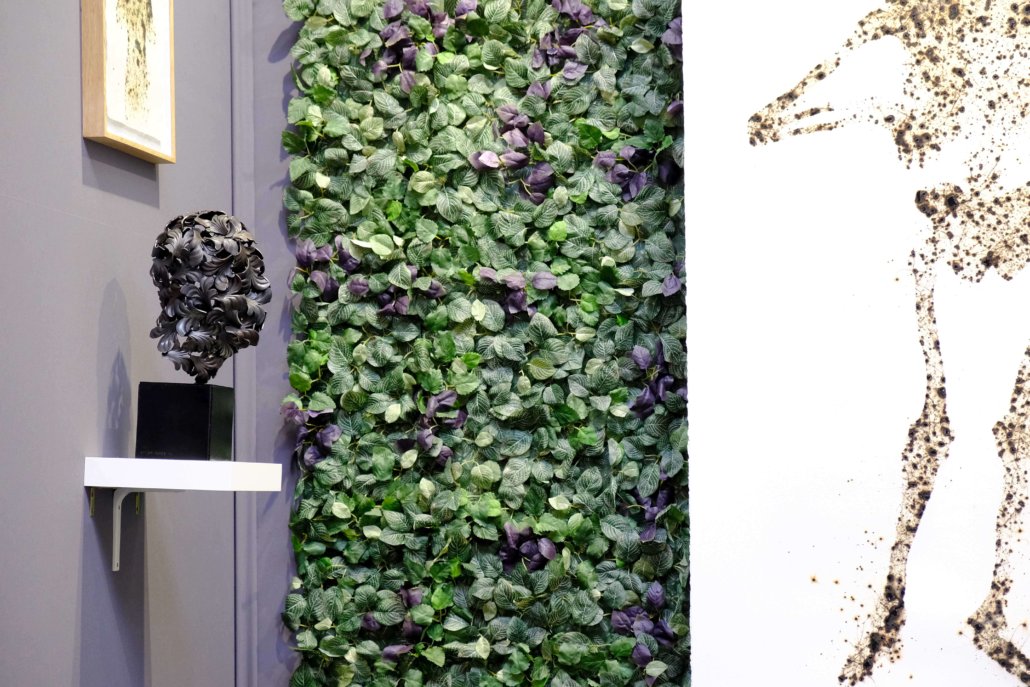 Installation view of “Gardens” at AKAA 2019.
Installation view of “Gardens” at AKAA 2019.
This will be your first solo exhibition at AKAA. What did you gain from the experience?
“Gardens” is curated by Sónia Ribeiro and Graça Rodrigues, with whom I worked closely while developing the project over the past few months; it has been a fantastic opportunity to strengthen my relationship with This Is Not A White Cube.
Solo shows at art fairs are always great in the way that they break the monotony of usual stands showing a group of artists. It has also been an excellent opportunity to see what everyone is doing and draw attention to my work and meet other artists, new galleries, collectors and institutions.
AKAA 2019 took place at Le Carreau du Temple in Paris, France from the 9th until the 11th of November 2019.
Storm Simpson



